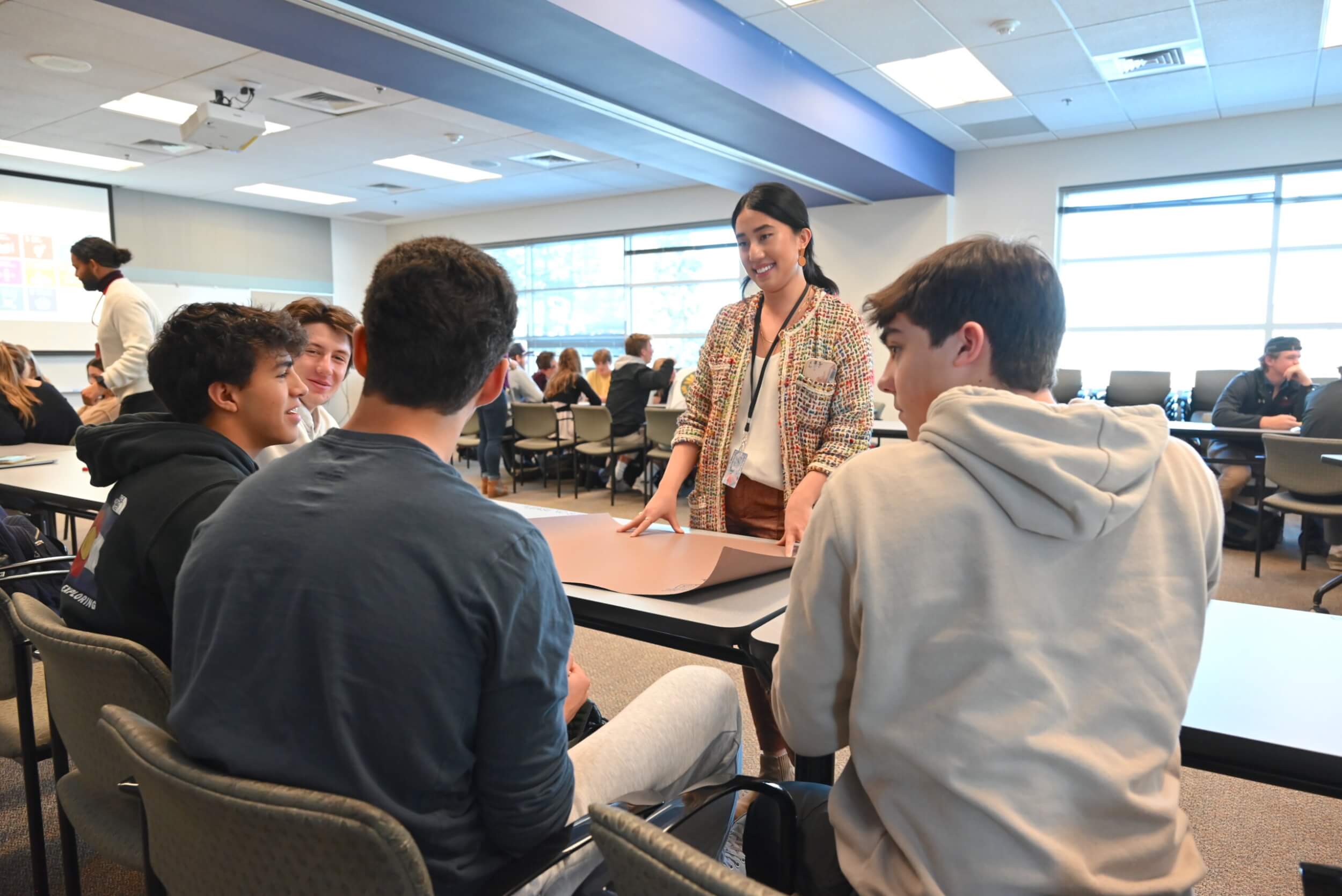Colorado Academy’s ongoing sustainability work received a substantial boost during a weeklong Upper School residency with the Foundation for Environmental Stewardship (FES), a youth-led, youth-serving non-partisan sustainable development organization. From January 23-27, educators with the Canadian nonprofit took over science and social studies classes to raise awareness about the United Nations Sustainable Development Goals (SDGs), 17 interlinked global aims designed as a “blueprint to achieve a better and more sustainable future for all.”
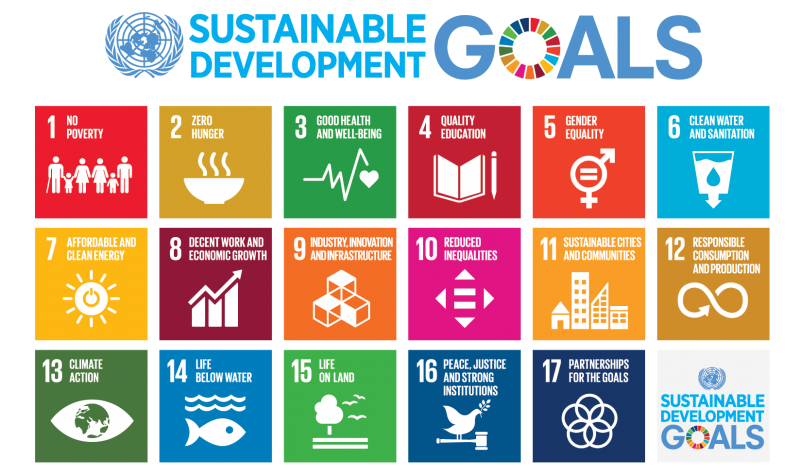
The SDGs, set up in 2015 by the United Nations General Assembly and intended to be achieved by the year 2030, include objectives such as “No Poverty,” “Zero Hunger,” “Sustainable Cities and Communities,” and “Climate Action.” During interactive workshops throughout the week, students in Grades 9-12 learned that most nations are far from achieving the SDGs, and they felt a sense of urgency as they discovered that the United States ranks well behind other developed nations in making progress toward meeting the goals. Through classroom sessions and assemblies, students engaged with critical issues such as climate change and gender equality, and they collaborated to envision ways that they could help spark action toward achieving the SDGs.
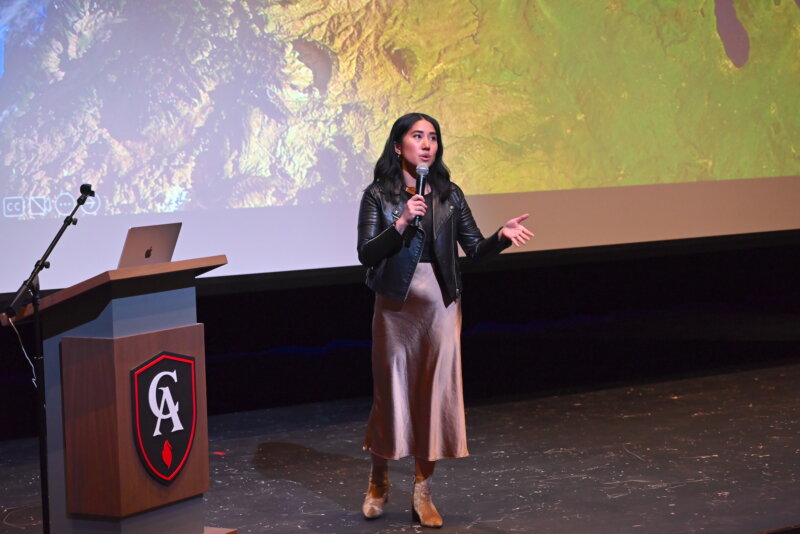
The week of education was highlighted by a SPEAK (Series for Parent Education About Kids) keynote on Tuesday, January 24, by FES Executive Director Kat Cadungog. Students, faculty members, parents, and staff were in attendance in the Leach Center for the Performing Arts, as Cadungog shared her message about the importance of sustainable development.
Following an introduction by Head of School Dr. Mike Davis, who underscored the many CA sustainability initiatives already underway—including the installation of a biodigester to transform food and other waste into compost—Cadungog emphasized that without climate action, the SDGs will be nearly impossible to achieve. Mentioning recent events such as climate-induced famines, and noting that climate refugees around the world already number over a million, Cadungog said, “We cannot talk about sustainable development without talking about climate change.”
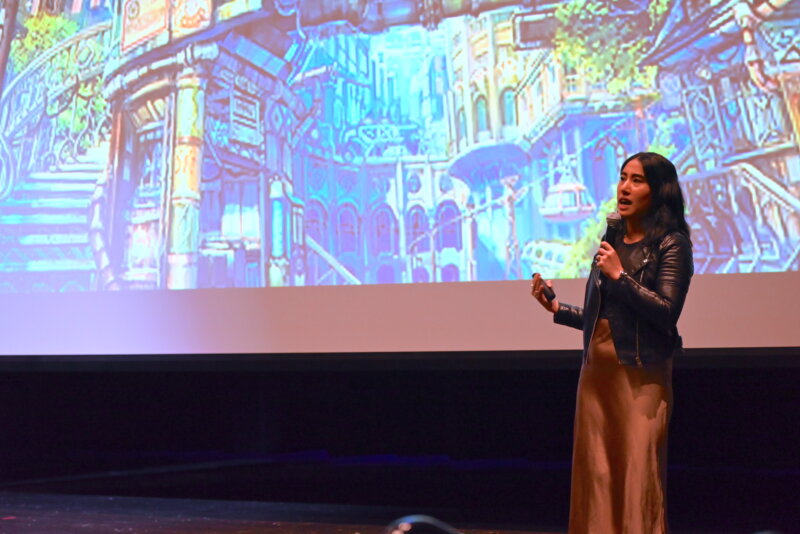
She set out to demystify climate change and the science that supports our understanding of it. She explained the greenhouse gases from industry and other manmade sources that are impacting the Earth’s fragile atmosphere and contributing to global warming, and she outlined the many effects of rising temperatures, including unprecedented flooding, heatwaves, and more.
Cadungog faulted developed nations such as the U.S. for failing to account for their contributions to the climate crisis, placing the bulk of the blame on the fossil fuel industry and other major sectors of the economy. These big players, she said, have consistently sought to push the responsibility for pursuing sustainable development onto consumers. Yet it is industry’s reliance on fossil fuels that has brought the planet to the brink of a climate disaster, she argued.
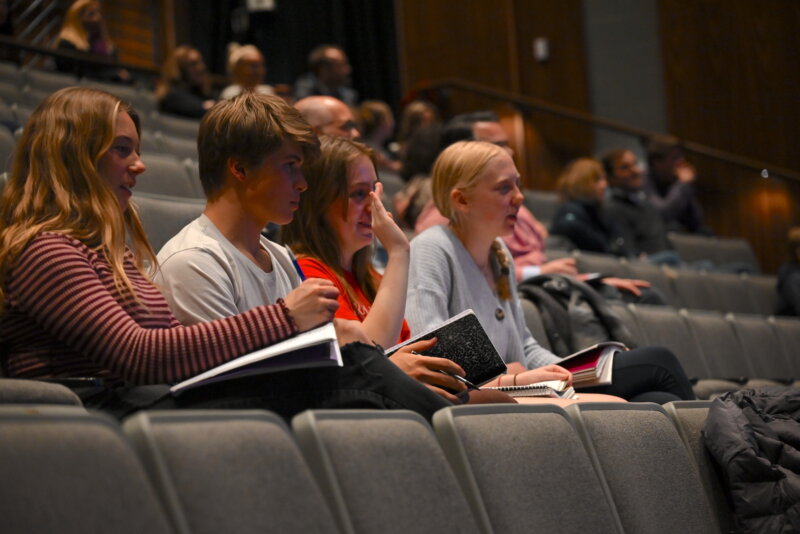
The remedy, according to Cadungog, is talking about climate change—examining our lives and communities to see its effects and advocating for sustainable solutions. Rather than giving in to climate anxiety—a well-documented phenomenon that leads to feelings of powerlessness in the face of the huge challenges we must confront—humanity must reconnect with nature and the environment and take action based on the things they value.
“We need people doing their best to understand their spheres of influence and create a culture of change where they can,” Cadungog said.
She went on to sketch the emerging technological, social, and political changes that could help to bring about a sustainable future: renewable energy, green urban development, electric vehicles, efficient manufacturing and transportation practices, smart textiles, vegetarian and other alternative food philosophies, reduced consumption and waste, fossil fuel divestment, and much more. Cadungog pointed out that many of these approaches come with economic benefits, such as job creation and energy independence for developing nations.
Thinking locally
Cadungog’s focus on the actions individuals can take to make a difference in their communities continued throughout the week, as she and her colleague Jessica LeBlanc, Program Director with FES, brought their organization’s SDGs LAB to CA science and social studies classrooms.
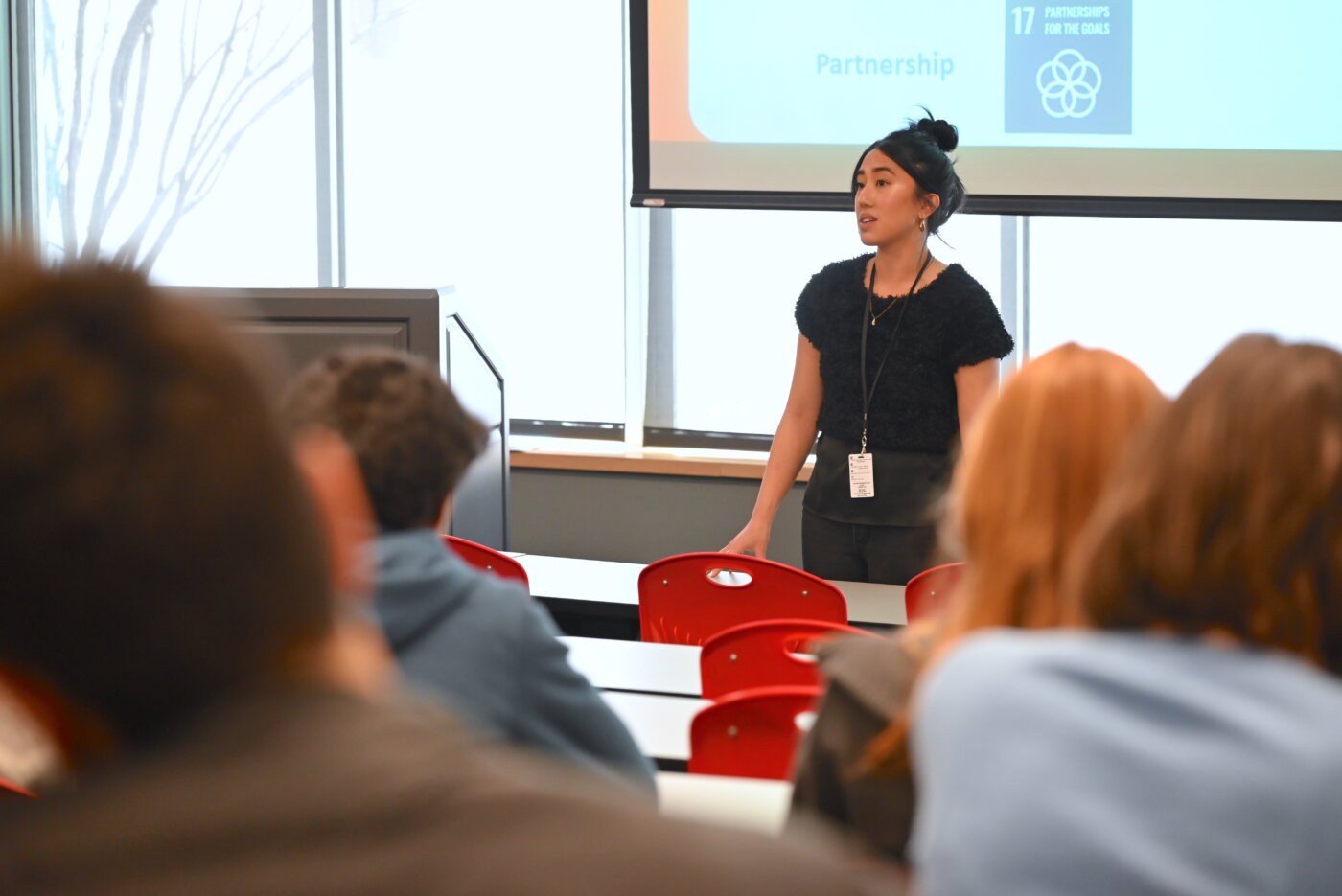
LAB—an acronym for the three main components of the FES program: Launch, Activate, and Boost—aims to raise awareness about the SDGs, to ensure that students have a foundational understanding of what the goals are, how they came to be, and how youth can become better advocates and champions of sustainable development.

During the Launch phase, students took a deep dive into the history of sustainable development and surveyed examples of each of the 17 SDGs implemented by a variety of stakeholders. In the engaging Activate classroom sessions, Cadungog and LeBlanc led students through an exploration of where and how youth can intervene to make an impact and what they can be doing in their daily lives as individuals and community members. Students took a close look at the concept of spheres of influence, and investigated SDG challenges at CA.
Finally, during the Boost phase, students took part in workshops where they used the Design Thinking process to brainstorm and propose action steps for potential sustainability initiatives at CA, including paperless classrooms, composting of food waste, the greening of campus, and renewable energy usage. “You have a voice,” LeBlanc emphasized with students. “What you say and do matters.”
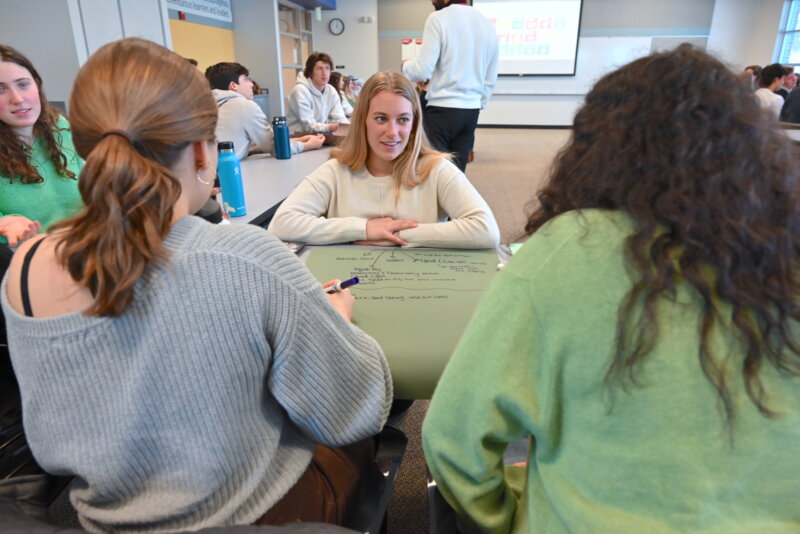
Reflecting on the week of education, connection, and action, Senior Ashley Hagen, co-leader of CA’s Upper School Environmental Club, observes, “Many people understand that climate change is a major issue, but we often don’t have conversations about it. Hearing Jess and Kat talk about this made me think more deeply about where and who I’m having conversations with around climate action.”
Upper School Science Department Chair Amanda Zranchev explains, “A lot of our families had been craving more programming around sustainability, and when we found out that FES offers an academic, classroom component, for me as science chair, it made a lot of sense. I was interested in the way they take students through big and global ideas around the UN sustainability goals and then help narrow it down so that they come away with some tools to make small impacts at the campus level.”
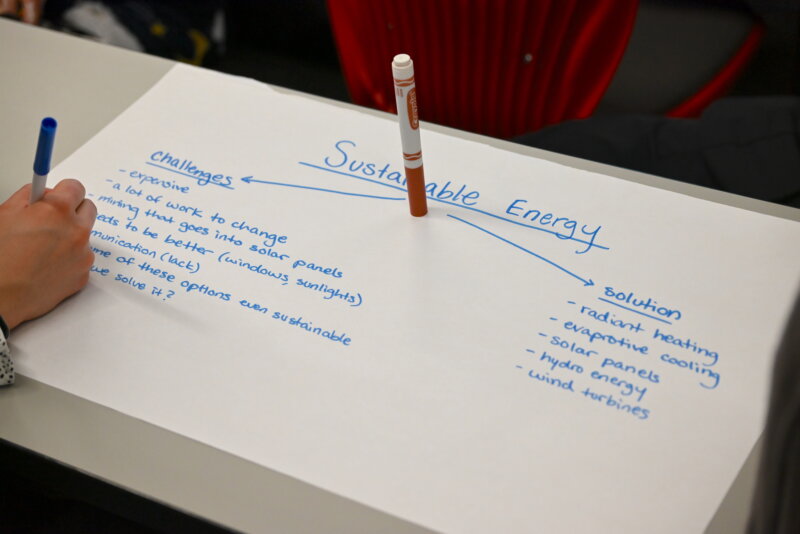
“Our Upper Schoolers can intellectualize these concepts,” Zranchev continues, “but at the same time they are stressed and anxious about the climate situation. The Design Thinking approach that FES uses aligns very well with our own philosophy here at CA; it helps young people reframe their concerns, so they can come up with project ideas they can bring home.”
Zranchev worked with her Science Department colleagues to schedule the FES sessions during Climate Change and Environmental Chemistry classes, where the content seemed to fit naturally. But, in thinking about CA’s ongoing shift towards its brand of Advanced Studies and Research course offerings, which prioritize interdisciplinary thinking about real-world topics, she and Upper School history teacher Randall Martínez realized climate action deserved emphasis within the Ninth Grade Global Perspectives course, as well.
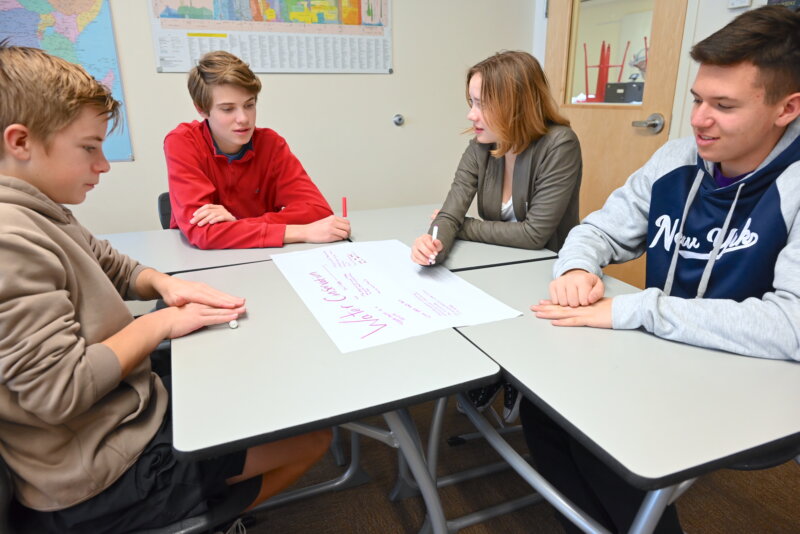
Exploring human rights, globalization, and the environment, says Martínez, “The Global Perspectives course teaches students to engage in collaborative dialog and research around promoting peace for a sustainable future.”
Pairing FES’s LAB program with existing CA classes clearly had an impact, says Zranchev. “I saw students actively seeking out Jess and Kat on campus or during lunch and sitting down with them to talk about what other actions they could be taking.” In follow-up class meetings, teachers helped students continue discussions about the ideas that they worked to develop during the FES sessions.
According to Hagen, “I think the FES visit enabled many students to think more deeply about climate issues that surround us. While Jess and Kat were here, I heard lots of positive comments about how they were engaged by the activities or how they learned to take action in ways they hadn’t thought of before.”
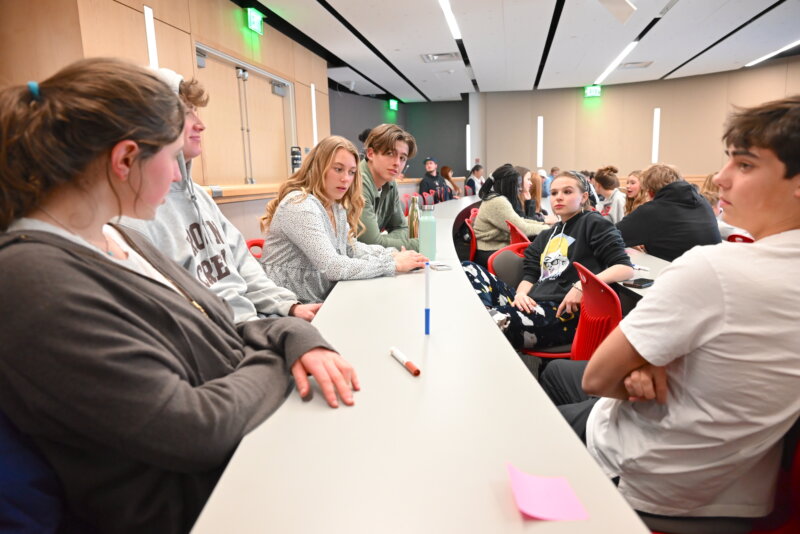
“At CA,” says Zranchev, “there’s always a little bit of tension between our students’ drive to succeed in school and the bigger goal all of our teachers share: wanting students to be able to think for themselves and see their own intellectual potential. By encouraging independent thinking and creativity and giving students the opportunity to see the impact of what they’re learning in the real world, the FES program really provided space for that larger vision.”
Agrees Hagen, “This week was a large step toward taking further action on climate change and sustainability at CA. While many of my club members are dedicating time to do their part to help combat climate change, our club of 20 is not enough. I hope that because of the FES workshops, more students will recognize the importance of this issue and will push for it more on campus. This was really a leap in sustainability awareness at CA and something that I hope to see continue and even grow.”
